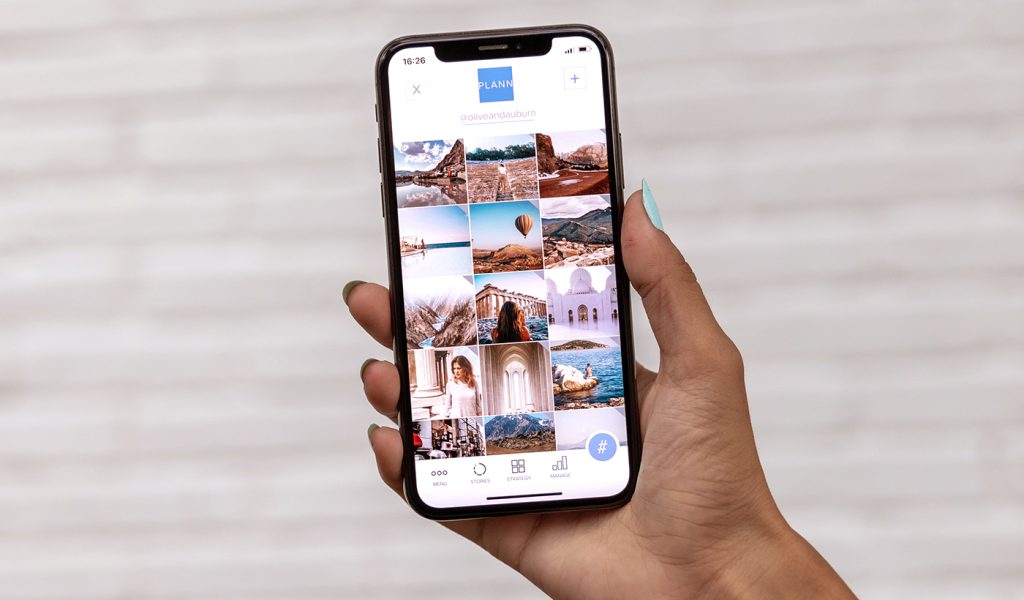Book marketing ideas and tips for self-publishers
Navigating the crowded landscape of modern publishing can feel daunting. With countless book titles vying for attention, getting creative with your book marketing ideas is essential. How can you ensure your book stands out and doesn’t fade into the background?
That’s what we’re here to discuss. Whether you’re a debut self-publisher or a seasoned veteran, here we unpack effective book marketing tips and ideas tailored for the Digital Age. With the right blend of creativity and strategy, every book can find its audience. So, let’s delve into some innovative ideas to elevate your book’s presence and connect with your audience.
To help get your creative juices flowing, here are sixty book marketing tips and ideas worth exploring.
Before you begin
1. Set your goals
Defining your overarching goals will help guide all of your marketing ideas. Start by asking yourself some questions.
What defines success for your book? How many copies do you need to sell to make a profit? To break even? What do you want your book to do—open doors for speaking opportunities or establish your credibility and expertise?
Figuring out your why will help narrow down the marketing possibilities from millions to a few great ideas. Plus, setting goals will also help you figure out if your marketing efforts are going well!
2. Know your audience
Books with a clear audience sell better. And books with a clear focus sell better.
You probably already considered your audience as you created your book, but take some additional time to clarify. Asking questions like the following will help. Who is your ideal target? What do they want from life? What will that target audience want from your book?
Using your answers, choose marketing options that meet your target audience where they are. Throw out everything that doesn’t speak to them.
3. Establish your self-publishing arsenal
Gather up these self-publishing essential tools to market and promote your book.
- A solid pitch. Know how to describe what your book is about and why people should pick it up in 5 seconds, 1 minute, and 5 minutes. What sets your book apart from the rest?
- A creator bio. You’ll need a short bio for social media, a medium one for blog posts and programs, and a long one with all your credentials and previous work. Think of it as your creator’s resume. You want to showcase your strength and expertise while still being a real person.
- A creator headshot. Professional-looking photos help establish professional credibility. Be alone in the shot. Your priority for this is clarity, not personality. Save the personality for social media.
While bookmaking

4. Choose the right paper
The small details can have a big impact on your finished book. One of the most important details is your book’s paper choice. The right feel in your buyer’s hand can turn your book from basic to beautiful.
If you’re printing with Blurb, Premium Lustre and Mohawk proPhoto Pearl are great choices for creating high-end photo books with a hint of gloss. Standard paper and Mohawk proPhoto Pearl offer a more matte feel.
5. Harness the power of cover design
Never underestimate the impact of an attractive cover. It’s the first thing people see and can influence their buying decisions. Consider hiring a professional designer or using book cover design best practices when crafting your own.
6. Add a professional edit
Beyond cover design, you also need proofreading and editing to ensure your book is polished and error-free. A fresh pair of eyes will spot errors and fill in any gaps between your intention and your audience’s experience. Better yet, a professional editor every step of the way can help you catch any issues—from your storytelling arch to consistency issues.
7. Limited edition print runs
Release a limited edition version of your book with exclusive content or a unique cover. Fans love collector’s items, and a rare edition of your book can help build hype and interest—whether that’s at launch or after the fact!
8. Embed interactive elements in ebooks
If you’re creating an ebook version, you can add interactive elements to engage your audience and provide a unique experience. There are numerous tools that you can use to make your ebook interactive, like clickable quizzes or embedded videos.
9. Record an audiobook
Diversify by turning your book into an audiobook. This gives prospective readers another way to digest your book, particularly those who prefer audiobooks. Promote it on platforms like Audible or Spotify for greater exposure.
Before launch

10. Hone your launch strategy
A successful launch can set the tone for your book’s journey. Plan meticulously, from pre-launch activities to post-launch follow-ups. Begin with your basic book marketing (see the next section) but don’t forget to try out-there ideas like planning your own international book tour or investing in some virtual reality promotion.
11. Cover the basics of book marketing
Check the boxes of book marketing best practices by building a robust foundation before you launch your book. You’ll most certainly want a professional website, active social media profiles, and regular engagement strategies. This helps you establish credibility and an audience well before your book hits the market.
12. Create an immersive book website
Having a dedicated place to drive prospective book buyers is key to marketing your book. Consider creating a dedicated microsite for your book with interactive features like character backgrounds, interactive maps, or behind-the-scenes content.
Learn 10 tips for creating an author website.
13. Write a captivating book blurb
The back cover or online description of your book, often known as the blurb, plays a crucial role in grabbing a potential buyer’s attention. Craft a compelling blurb that gives a hint of the story, introduces central characters, or presents the core theme, all while maintaining an air of mystery.
24. Seek out endorsements and testimonials
Endorsements from credible sources can boost your book’s curb appeal when featured on the back cover. Reach out to reputable figures, influencers, media companies, and other notable sources who may be willing to read your book and provide a testimonial or endorsement.
15. Conduct SEO research
Research popular keywords related to your book’s topic. Ensure that your content aligns with what people are actively searching for. This can increase the chances of your book being found on Amazon, Google, or other search engines. Once you’ve discovered the right search terms, add them to your website and book blurb.
Need more information? Here’s how to master SEO as an author.
16. Invest in book trailers
Some of the most innovative book marketing ideas involve creating digital assets of your work. Invest in a compelling book trailer that captures the essence of your book. Then share this visual representation across all your digital marketing platforms for broader reach.
17. Grow your mailing list
A dedicated subscriber list can be your best book marketing tool as a self-publisher. If you don’t have an email list, now’s the time to start. Once you have one, share regular updates, exclusive content, and promotions to keep each subscriber engaged.
If you’re interested in a deep dive, here’s our guide to selling books with email marketing.
18. Sneak peeks via serialized email campaigns
Depending on the size of your current mailing list, consider releasing parts of your book as a serialized email campaign for subscribers, thereby building anticipation for the full release.
19. Explore blogging with rich visuals
Create a blog that complements your book. Building a blog can be a strong supplement to your book marketing efforts as a self-publisher.
For visually-driven books, this could mean high-resolution photo posts or illustrated stories. For wordy books, that might mean more previews of chapters or behind-the-scenes of writing and marketing your book.
20. Strategize effective ad campaigns
You’ll likely need a little paid ad support around your launch—and after. Invest in targeted ads on platforms like Facebook, Google, and Pinterest. Use visually appealing graphics and compelling copy for best results. Experiment with different ad formats (like still images, video, and carousel) relevant to the book’s content and genre.
Combining both organic and paid efforts can help you bring more attention to your work, build an audience, and ultimately, sell more books.
21. Try print media
While digital dominates, don’t ignore traditional media. Seek out opportunities for advertisements and features in related magazines or newspapers that cater to your book’s audience.
22. Crowdfunding campaigns
Before publishing your book, you can generate a buzz while gaining financial support through platforms like Kickstarter. It’s a great way to pre-market your book and offer incentives to early customers.
If you’re not interested in crowdfunding campaigns to help with the bookmaking aspects, you should consider preorders. This tactic has made plenty of books go from unheard of to bestsellers.
23. Print marketing assets
If you have extra funds, it can be very useful to print marketing assets. These tangible tactics keep your book top of mind. From bookmarks with your book’s theme to posters and postcards, these can leave a lasting impression.
Post launch

24. Get your book reviewed
Consider making your book available for free for a limited time so people will read it and comment. The key is to get the attention of your bookstore’s algorithm by being picked up in “also purchased” or “also viewed.”
Send your book to known experts in the field. People are more willing to spend time on a new book or self-publisher when someone they already trust gives it a thumbs-up. Check out this post for more book marketing tips on acquiring and making the most of professional book reviews.
25. Encourage reviews on relevant book platforms
Once your book is out of the free time period, encourage your audience to leave reviews on platforms like Amazon and Goodreads. You can add a page in the back of your book requesting reviews, or email your audience about the importance of reviews. Positive reviews can significantly boost sales and increase your credibility as a self-publisher.
26. Iterate on your paid advertising
You likely already invested in a paid marketing campaign on social media and search engines like Google or the Amazon bookstore. Now it’s time to review the results and make necessary changes. Make sure you’re optimizing your ads for better visibility, targeting the right audiences, and testing different ad formats. Keep a close eye on your ROI (return on investment) here, as it can fluctuate quickly over time.
27. Hold a virtual book tour
Engage with your audience globally by conducting virtual book tours. Use platforms like Zoom, Google Meet, or Teams for interactive sessions. You can host a Q&A session, show excerpts from your book, or conduct contests for giveaways. This can be a great way to build relationships with your audience and promote your book—no matter where they live.
28. Targeted content marketing
Content marketing involves creating blogs, videos, social posts, and other material that doesn’t explicitly promote your book but is intended to stimulate interest. Get creative and produce content that addresses interesting topics about your theme and brings awareness to what you’re trying to convey.
Not sure what that looks like? We’ve got two examples up next to help make you a content marketing whiz.
29. Host interactive workshops
Along with your book tour, it’s a great idea to provide workshops that are related to your book’s genre but not directly selling your book. For cookbooks, you might conduct a series of cooking workshops. For kids’ books, you could organize storytelling sessions, maybe even with other self-publishers.
Engage a new audience by letting them experience your book’s theme without the hard sales pitch. Of course, you’ll certainly want to mention your book at the beginning or end.
30. Craft educational courses related to your book
If your book is educational, break down its content into a course or webinar. Platforms like Udemy can be a great starting point for building a course and marketing it to a highly targeted and eager audience that’s willing to learn.
Just remember to differentiate your course from your book enough that students who learned from you will want to keep up their education by buying it.
31. Create wearable merchandise
As you start generating fans, they’ll likely start asking for merch. Produce wearable and portable themed merchandise like tote bags, mugs, or t-shirts that let your loyal audience show their love of your work.
Merch that moves through the outdoors serves as a walking advertisement and an added revenue stream. If you don’t want to create merch about a specific book, create merch that supports your audience’s loyalty to your personal brand as a creator.
32. Design stickers and decals
Along the same lines as your wearable merch, you should consider visually appealing stickers related to your book. Fans love to slap stickers of their interests on laptops, folders, and more. It’s an easy giveaway that provides lasting brand exposure and memorability.
Remember, not all merch needs to be directly related to your book. Designing stickers that appeal to readers or photographers in general is just as important as a favorite photo, quote, or character from your book.
33. Try QR codes
Embed QR codes in your promotional material—like all that merch you’ve been creating. Scanning that QR code can lead your audience to a book trailer video, a free digital chapter of your book, or coupons to purchase your work at a discount.
In-person promotion

34. Hold a gallery opening
Especially for photography and art books, hosting or being a part of gallery openings can offer exposure to a highly targeted audience that may be interested in your book. Whether you do a solo exhibition or a group show, just be sure that your book is on display as well.
Books that feature original artwork can be a fantastic way for your fans to support your work if they can’t afford the cost of an original piece or want to experience the entire collection or gallery show from the comfort of their home.
35. Pop-up bookshops
Collaborate with cafes, local events, and other small businesses for temporary book stands to market your work. It’s a simple way to reach new prospective customers in person.
It’s even better if you find businesses related to your genre. If you have a book of cat portraits, we bet that your local cat cafe would love to feature your book—and their patrons would love to buy it.
36. Engage with local libraries and book signings
Connect with local libraries to have your book stocked. Organize book signings and readings to engage with your community directly.
37. Book pop-up events
Host book-themed pop-up events at unconventional spots like parks, malls, or transport hubs. Quick, fun gatherings can pique curiosity and boost sales—for your loyal audience and for people walking by.
38. Test geo-targeted ads for local interest
No matter what kind of in-person events you try, make sure to test into location-specific ads. These ads on Google or Facebook, which are both very effective platforms for geo-targeted ads, can make sure your events are well attended.
If your book has a localized focus, like a hiking guide to the Pacific Northwest, these types of ads could be the most effective way of reaching your target audience. Think global with your overall book marketing plan, but act local with more targeted strategies.
Social media marketing

39. Expand your web presence
Go beyond having just a website or just a Facebook page. Think outside the box with your web presence and cast a wider net. Test into up-and-coming social media sites or try having a presence on well-established networks that aren’t often used for book marketing.
More than that, remember to guest post on relevant blogs, participate in web forums, and use multimedia platforms to diversify your reach.
40. Leverage the power of YouTube
One example of a social media site that isn’t often used for book launches is YouTube. This is, by and large, the most popular video hosting platform and video-based social media network.
YouTube provides an opportunistic channel to share the content of your book in creative, alternative ways. For example, you can record audio readings of specific chapters or show behind-the-scenes content from photo shoots that made it into your photography book.
53. Host a Reddit AMA (Ask Me Anything)
Engage with the Reddit community by hosting an AMA, where your audience can ask questions about your book and writing process. Be mindful of what subreddits you engage and participate in, as you can also gain readership from being active in these spaces.
54. Visual teasers on social media
Visually-driven books benefit immensely from sneak peeks. Share vibrant snippets from your book on platforms like Instagram, teasing your audience and leaving them wanting more.
55. Leverage Pinterest for visual books
Platforms like Pinterest are great for visually-driven books, especially photo books, cookbooks, and children’s books. Create pinboards that reflect themes, settings, or imagery from your book.
56. Use TikTok for quick promotions
TikTok has exploded as one of the most powerful ways to reach people organically. Short, engaging video clips about your book, its content, or its theme can become viral on TikTok even more than other social media, especially with the right hashtag strategy.
41. Art competitions for your audience
Use social media and other communication channels to invite your audience to create art inspired by your book. Incentivize participation with prizes and showcase the best entries on your platforms.
Collaborations

42. Collaborate with relevant influencers
Reach out to influencers in relevant industries or markets that align with your book, like notable food bloggers, photographers, or sports and fitness gurus. Their endorsement can amplify your book’s reach to their vast follower base.
Just know that many influencers will only promote things for a price—which can range from a free copy to thousands of dollars. Don’t be afraid to ask influencers for their help, but don’t be surprised if you hear they expect a payment.
43. Take part in podcasts and webinars
Position yourself as an expert in your subject. Discuss your book’s theme on thematically related podcasts or webinars, and make sure to provide listeners and viewers with a link to your book.
44. Cross-promote with fellow creators
Team up with self-publishers in similar or complementary niches. Work together to bundle promotions, share each other’s content, or host joint events.
Most self-publishers want to share their knowledge and support indie creators, so don’t be shy to reach out. Be sure to pay it forward by doing the same once you’ve made a name for yourself.
45. Collaborative ebook bundles
If producing a digital version of your book, you can team up with other self-publishers to create bundled ebook packages. A great book marketing idea for newcomers, this collaboration can introduce your work to other creators’ fan bases.
46. Book subscription boxes
Partner with book subscription box services to feature your book, reaching an eager and book-hungry audience. You might not get the same profit margins with such vendors, but you can widen your reach.
47. Online book club engagements
Connect with online book clubs and offer them early access or discounts for purchasing your book. Book club discussions and forums can be powerful ways to spread the word organically.
48. Try affiliate marketing for your book
Setting up an affiliate program for your book is a great way to let others do the marketing for you. Let bloggers and social media influencers earn a commission for every sale they refer and piggyback on their audience in the process.
49. Collaborate with schools and colleges
For suitable content, collaborate with educational institutions for readings, workshops, or inclusion in the curriculum. This can be a fantastic way to cultivate interest in your book and build awareness in you as a self-publisher.
50. Guest appear on popular YouTube channels
Similar to guest blogging on related publisher sites, try to land appearances on popular YouTube channels related to your book’s topic. Start by subscribing to channels related to your book’s genre and reach out to vloggers about doing a video.
Keep up the momentum

51. Explore a serial publishing strategy
Regularly publishing content or a series of books can keep your audience engaged and expand your audience over time. Zines, photo books, and other collections can be ideal candidates for a serial publishing strategy.
52. Offer regular promotions
Hold seasonal discounts, anniversary sales, or special edition releases to keep the buzz alive around your book. People love a discount, so this is a great way to help people who have your book in their cart actually push “buy.”
If you publish your book on the Blurb Bookstore, expect monthly discounts that allow you to keep your profit. It’s one good reason to print with us.
53. Leverage augmented reality (AR)
Embrace the latest technology with your book marketing ideas. Incorporate AR in your marketing. Allow your audience to experience a 3D version or interactive snippets of your book through their smartphones.
54. Offer loyalty programs
Reward your regular book buyers with exclusive content, discounts, or first access to your new releases. Having a mailing list can be invaluable for this type of book marketing strategy—and can be a great incentive to feature on your newsletter signup form.
55. Interactive digital content
One outside-the-box idea is to create interactive content related to your book, such as quizzes, polls, or even a mini-online game. The intention is to encourage interaction and engagement with potential book buyers.
56. Use chatbots to engage visitors
Integrate a chatbot on your website to help in providing book insights, answer queries, and guide visitors to purchase. Use a tone or communication style that matches your writing style or book theme.
57. Self-publisher interview series
Host a series of interviews with other self-publishers in your genre or industry. This will not only provide valuable content for your audience but also create opportunities for cross-promotion.
Don’t know other self-publishers? The same idea holds for other interviews that might be useful or related to your book’s genre, from photographers to artists to spiritual masters.
58. Give books away
People love free things! Partner with relevant bloggers or influencers for giveaways of your book—or a bundle of your book and others in the same genre. This can help you reach a wider audience and generate more interest in your work.
59. Go to book fairs and festivals
Local and international events like book fairs, art fairs, and festivals are perfect places to gain a wider readership. This can help you connect with other creators, partners, and, most importantly, target customers.
Get creative in your event planning—genre-right conferences are ideal for educational books, pride festivals are made for queer photobooks, and kid’s events work well for children’s books.
60. Be consistent, be steady
Learning how to self-publish doesn’t ensure overnight success. There’s no single trick that will make your book go viral. Success comes from making a lot of small, focused marketing efforts over time. Create a schedule you can commit to, whether it’s five hours a week on social media or 20 hours a week with readings and events. It needs to be something you can sustain for six months to a year. There’s no universal formula for generating book sales, but nothing works without steady diligence.
How Blurb can help
When it comes to putting your book out into the world, Blurb stands as a reliable companion in helping produce, market, and sell your book. Our print-on-demand services help you manage your inventory while minimizing overhead costs and ensure every book you sell mirrors the dedication you’ve infused into every page. By leveraging Blurb’s expansive distribution channels, you can market your book on popular platforms like Amazon and thousands of indie bookstores, enabling you to reach buyers far and wide.
But it’s not just about reaching your audience; it’s about reaping rewards too. At Blurb, we’ve designed our system with your benefit in mind. You get complete control over your book’s pricing, which means you dictate your profit margins. Pair that with our robust distribution and top-tier printing, and you’ve got a winning combination for book-selling success. Get started by signing up today.


This post doesn't have any comment. Be the first one!